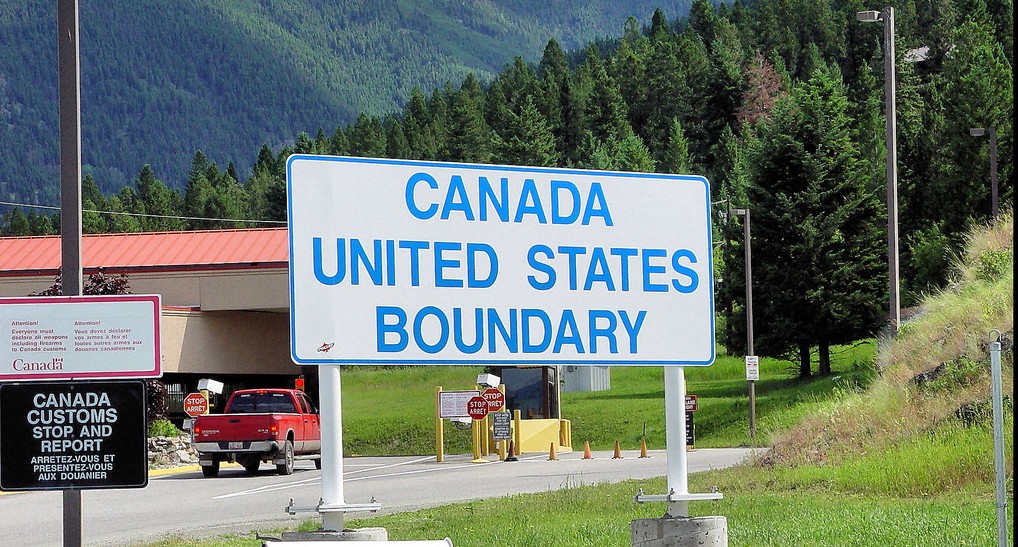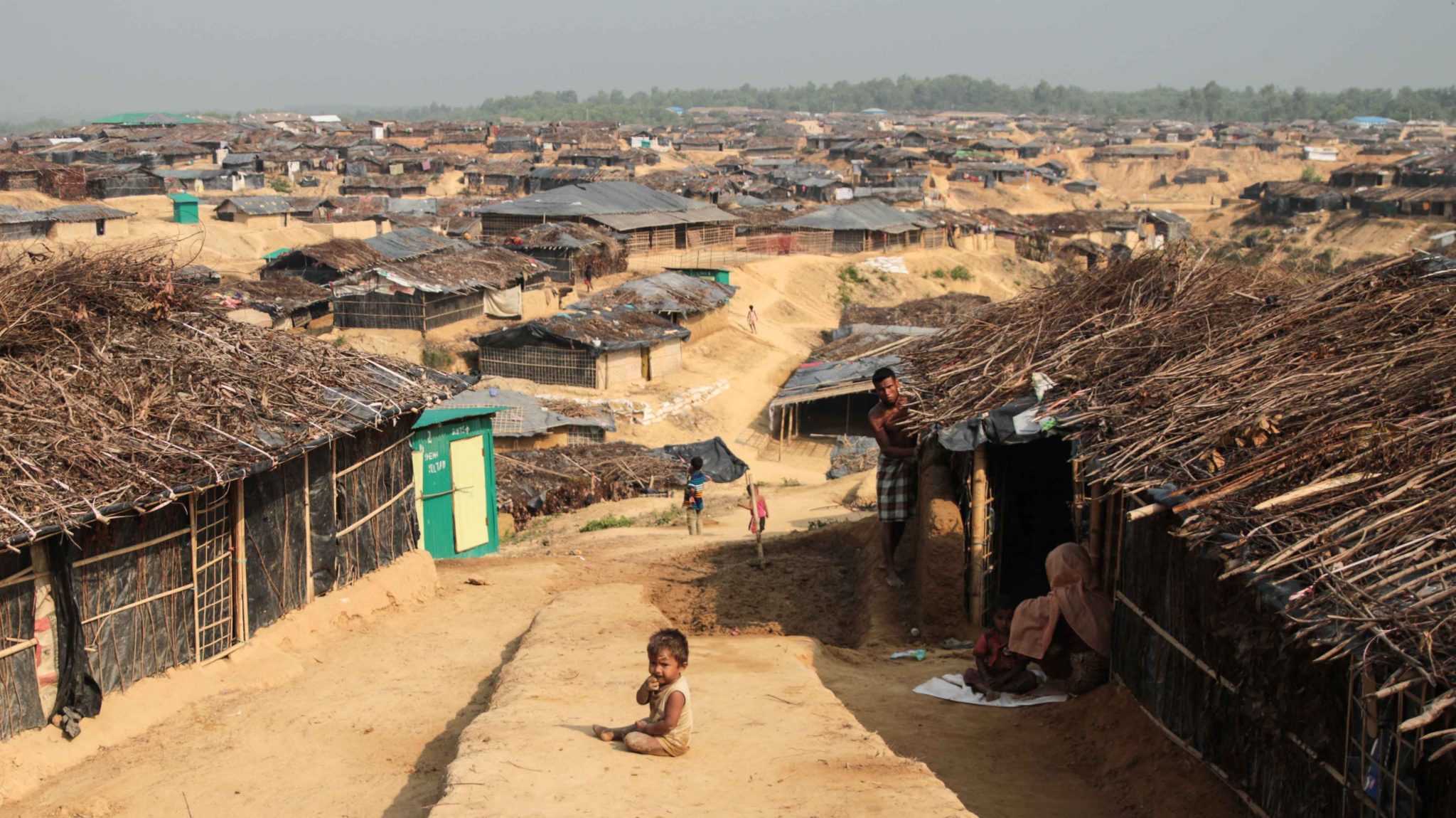Employment Barriers Force Some Refugees to Seek Social Assistance
Despite Canada's Refugee Claims Sponsorship Program, Some Still Struggle to Find Work after Their First Year
Refugees who resettle in Canada often want to work hard to give back to their communities. But in the first few years of life in Canada, it's not uncommon for some refugees to rely on social assistance. Regardless of their country of origin, refugees face many barriers to securing employment and attaining financial security.
Both government-sponsored and private-sponsored refugees receive financial assistance during their first year in Canada. While this may help with the resettlement process, many wind up stuck without a job. However, newcomers with privately-sponsored refugee claims tend to do better overall finding employment, compared to government-sponsored refugees.
Barriers to Work
According to a CBC News article, some refugees from Syria and other conflict-ridden countries are forced to turn to provincial social assistance since they cannot find work in Canada. They face barriers to finding work, sometimes lacking English-language skills or recognized education, skills, and training. Canada often does not recognize work experience and education credentials from foreign countries. As a result, many refugees go back to school, take exams, or work menial, low-paying jobs, which usually can only be done if they speak English.
Privately-sponsored refugees may have more success with employment because of the social support of their sponsors and a larger network to help them find work. But others lack access to employment support resources that could truly benefit their resettlement and quality of life.
For refugees with careers in their country of origin, relying on social assistance is causing them emotional distress. They experience a sense of failure and embarrassment for turning to the government for help. They're grateful to their sponsors, want to give back to the community, and continue to make efforts to do so.
Housing Concerns
Canada’s lack of affordable housing also affects refugee families. As with many low-income families in Canada, the provincial social assistance they receive is barely enough to get by. And to live in an affordable home often means living in a space that is too small for a family.
Canada needs to create more affordable housing, offer better employment resources, and recognize skills and education from other countries if it wants to truly help refugees resettle. While many refugees are grateful for Canada and their sponsors, the lack of career opportunities can be demeaning. A career built on hard work that goes unrecognized in their new home country is hard enough. Relying on government social assistance simply adds further difficulty and frustration.
Canada’s New Corporate Immigration Program a Success
New Global Skills Strategy is Attracting Top Tech Talent to Canada and Helping Businesses Grow
As countries around the globe close their doors to immigration, Canada is working to keep its doors wide open. With the success of a new corporate immigration program, Canada is attracting the world’s top tech talent. Many of these workers may have otherwise gone elsewhere, had attitudes towards corporate immigration been different. Canada is now among the leading options for skilled foreign workers, and its immigration strategies are proving to be helpful for newcomers and Canadian businesses alike. For more information on Canada’s business immigration system, contact a corporate immigration law firm.
Global Skills Strategy By the Numbers
According to a recent CBC News article, Canada’s Global Skills Strategy has already helped many highly skilled workers immigrate to Canada this year. Immigration, Refugee and Citizenship Canada launched this two-year pilot project in June. In the first two and a half months since its launch, the program has helped more than 1,600 people find jobs in Canada.
The Global Skills Strategy is attracting highly skilled workers, including top tech talent, to help Canadian businesses fill labour shortages. This corporate immigration program fast-tracks the application process for highly skilled foreign workers. It is also making the application process easier for the immediate family members of applicants.
Appealing Attitude
While this program makes it easier for applicants to work in Canada, anti-immigration sentiment across the globe has also made the country more appealing globally. While other countries placed strict limits on immigration, Canada worked to increase and improve immigration targets. This effort is paying off, as Canadian employers benefit by attracting the world’s top tech talent.
Silicon Valley in the U.S. has always been Canada’s (and indeed, the world’s) leading competitor for foreign tech talent. But now that President Donald Trump is making immigration to the U.S. very difficult, Canada has a competitive edge. Welcoming corporate immigration programs and progressive societal values are much more appealing than the negative immigration views by some policymakers in the U.S.
Canadian Tech Boom?
Canada’s tech sector has been growing for years and has always relied on foreign talent. However, the tech industry is booming and current Canadian talent lacks the numbers needed to help tech companies grow. Businesses need skilled workers, and quickly. Corporate immigration law firms are helping in this regard.
The Global Skills Strategy is proving to be an effective program to help businesses fill positions quickly while making the immigration process more efficient for highly skilled foreign workers. Canada’s tech industry and economy can only improve with effective programs such as the Global Skills Strategy.
For help recruiting foreign talent, or finding a job in Canada, contact a corporate immigration law firm today.
Canadian Immigration Asks For U.S. Help Deterring Border Crossers
Canadian Immigration Officials Need U.S. Co-Operation to Help Prevent Illegal Immigration
Since the summer surge of asylum seekers crossing at unofficial borders, the Canadian government has sought to deter further crossings.
The government spoke out to dispel myths appearing online about easy or guaranteed refugee status. A Haitian-Canadian Member of Parliament went so far as to visit Miami to address rumours spreading amongst the Haitian community.
While the number of asylum seekers crossing illegally has decreased significantly since August, the concern persists that more may be on their way, especially with US President Donald Trump in power. So, Canada is looking to the U.S. for help to curb more border crossers from entering Canada. For more information about Canada’s immigration policies and asylum claims process, contact a Canadian immigration lawyer.
Concern Over Border-Crossing Trends
Canada’s Public Safety Minister Ralph Goodale recently asked the US to look into US-issued travel visas used for the sole purpose of getting to Canada’s border. Goodale discussed Canada’s concerns with acting Secretary of Homeland Security Elaine Duke at a recent G-7 Summit of Interior Ministers.
The Canadian government has found a trend in border crossers with travel documents issued from some US embassies and consulates. These asylum seekers obtain travel visas with no intent to stay in the US. Instead, they travel directly to Canada’s border.
Goodale wants the US to look at the trend in embassy-issued visas, with a focus on why they were issued. This is especially important since these visa holders don’t plan to stay in the US.
Canada Kept in the Loop Re: US Immigration Policy?
Goodale also asked acting Secretary Duke and the U.S. to notify Canada of immigration policy changes that directly affect Canadian immigration and borders. The recent cancellation of temporary protected status for Haitians affected by the 2010 earthquake in Haiti is a chief example of policy changing affecting Canada. Following Trump’s cancellation of this protected status, thousands of Haitians living in the U.S. fled to Canada’s border. This caused a surge in asylum seekers crossing into Quebec this summer.
If the U.S. plans to cancel more immigration policies, like the temporary protected status, then Canada will see another wave of asylum seekers crossing at unofficial borders. And while giving Canadian immigration officials advanced notice can help them prepare for a surge in border crossers, it doesn’t address the underlying policies that are driving the surge in the first place. As such, additional improvements to US immigration policies are needed to address this issue on both sides of the border.
Census Data Reveals Highest Percentage Of Immigrants In Canada Since 1921
According to Statistic Canada’s 2016 Census Data, Almost 22 per cent of Canadians Are Immigrants
As Canada’s history shows, immigration numbers fluctuate throughout the years. Almost a century ago, the portion of immigrants in Canada’s population was higher than it was in 2016. In fact, Canada’s last peak was 1921, with numbers unmatched in the nearly 100 years since.
At least, until now.
Economic and social factors both in Canada and around the globe influence immigration rates. And as recent years have shown, Canada is more reliant on economic immigration than before due to the aging population and labour shortages in various industries and regions. For more information on economic immigration and becoming a permanent resident, contact an immigration lawyer in Canada.
2016 CENSUS DATA
Statistics Canada recently released a data set from the 2016 Canadian census with regards to immigration, Indigenous people, ethno-cultural diversity, and housing. According to the results, the percentage of immigrants in Canada has reached its highest level since 1921.
Based on this data from the 2016 census, 21.9 per cent of Canadians reported being or having been an immigrant or permanent resident. This is up from 19.8 per cent since the 2006 census. The portion of immigrants in Canada in 2016 is equivalent to 1931’s percentage, and just under 1921’s number, which was 22.3 per cent.
At this rate of immigration population growth, Statistics Canada estimates that the percentage of immigrants living in Canada could be as high as 30 per cent by 2036.
ECONOMIC IMMIGRATION
Census data also reveals that Canada welcomed 1.2 million newcomers between 2011 and 2016. The majority (60.3 per cent) of these newcomers were economic immigrants. Half of these economic immigrants were accepted through the skilled workers program.
The number of immigrants settling in Ontario is down from 55.9 per cent in 2001 to 39 per cent in 2016. And while 56 per cent of immigrants live in Toronto, Montreal, and Vancouver, many immigrants are now settling in western provinces. This is partially due to participation in the Provincial Nominee Program (PNP), which targets skilled workers to fill workforce positions.
REGIONAL BENEFITS
Provinces who are losing working-age populations to other provinces benefit greatly from the PNP. By fulfilling labour shortages, these regions are able to revive their economies. And within the next 10 to 15 years, labour shortages will be more widespread across Canada as Baby Boomers leave the workforce. Without economic immigration, Canada faces a short supply of skilled workers, resulting in a slow or declining economy.
To participate in a Canadian skilled workers program, contact an immigration lawyer in Canada for help with the application process.
Canada To Match Donations to Rohingya Refugee Crisis
Canadian Government Announces it Will Match Donations to Charities Helping Rohingya Refugees
The largest refugee camp in the world is currently found in Bangladesh, and houses hundreds of thousands of Rohingya refugees. The Rohingya people are an ethnic minority from Myanmar who have been forcibly displaced by violent persecution, forcing the arduous trek to Bangladesh. Many Rohingya refugees in Bangladesh suffer from physical and mental health problems. Unfortunately, this refugee camp is struggling to provide care because of inadequate resources.
Canada’s Minister of International Development, Marie-Claude Bibeau, recently announced that the federal government will match every donation that Canadians make or have made to charities helping the Rohingya refugee crisis between August 25 and November 28, 2017.
With the end of November fast approaching, Canadians are encouraged to make generous donations to help save the lives of the many Rohingya who do not have access to basic necessities and healthcare.
Understanding The Refugee Crisis
The Rohingya refugees and other minorities fleeing persecution in Myanmar now make up the largest refugee camp in the world. This camp, located in Bangladesh, currently has more than 900,000 Rohingya and other refugees, and more people keep arriving every day.
Women and children make up the majority of these refugees. This vulnerable population is in dire need of physical and mental healthcare, but doctors offering aid lack the resources and medical equipment needed to properly treat them. Despite their best efforts, these doctors struggle to access even basic healthcare equipment and resources.
When women are in distress during childbirth, they have a high risk of mortality due to inadequate healthcare resources. There are currently 120,000 pregnant women and young mothers living at the refugee camp in Bangladesh.
PTSD and Psychological Trauma
The camp is home to many orphaned children suffering from physical and mental health problems. A significant number of these cases stem from witnessing or experiencing atrocities and abuse. Most, if not all, refugees in the camp suffer from post-traumatic stress disorder (PTSD) because of the violence and hardship they have faced and witnessed.
The Canadian Red Cross is currently operating a mobile clinic and providing support to a field hospital that sees 250 patients per day. Earlier this year, the UN appealed for $434 million to respond to the crisis. Canada has committed $25 million to the Rohingya refugee crisis so far.
Encouraging Canadians To Help
Minister Bibeau is encouraging Canadians to donate generously to help the Rohingya refugee crisis. As mentioned previously, the federal government will match donations made to any Canadian charity helping the Rohingya refugees until November 28. Furthermore, the Government will match any donations previously made, dating back to August 25 of this year.
Some of the Canadian charities helping the Rohingya include:
- Canadian Lutheran World Relief,
- CARE Canada,
- Islamic Relief Canada,
- Oxfam Canada,
- Oxfam-Quebec,
- Plan Canada, and,
- Save the Children Canada.
Although the Rohingya have fled violence and persecution, they now face a lack of basic necessities and healthcare. Without the help of Canadians, the federal government, and nations around the world, the Rohingya will continue to suffer. Like all people, they also deserve a chance to live a healthy life, safe from violence and illness.





